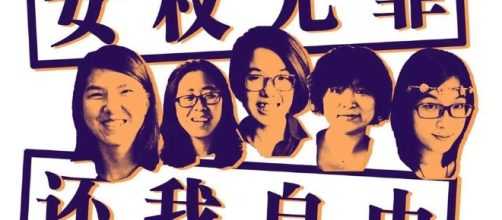You’ll probably use Google, Facebook and YouTube every day to share and research information. However, in some countries such as China, people don’t have access to these, and it means they only rarely have a chance to tell the rest of the world about their lives in China.
I’ve been asked a few times about Chinese feminism in China; and I realised, as a movement, it is only rarely talked about outside of our borders. But the movement for women’s rights has played an important role in the lives of women over the past 100 years, and things have changed slowly over here too.
Slow close in gender gap in China
There are various reasons why the gender gap started to close slowly. The Female’s Anti-Foot Binding and Female School Establishing Movement contribute a lot to the rise of women’s social status. However, people’s mindset is hard to change; they still remain conservative due to years and years of common practice in China. For instance, the concept of patriarchy still sounds common. Thus, there is still a long way to go until inequality will be fully eliminated.
First Flower of Spring
Generally speaking, the level of education of women has improved when compared with the past. With advanced knowledge, more women are employed to work in high skills professions, such as lawyers, or even jobs at higher management level.
Holders of such positions tend to be more financially independent. The gender inequality began to narrow down at this stage. Education has been the driving force for change.
In political terms, the social status of women was liberalised from feudalism. The representation of women in the first Chinese People’s Political Consultative Conference was at 11.9 percent in 1954 and increased to 12.3 percent in 1959. It brought a new image of Chinese women to the world, they were no longer serving their family only, but also started playing a role in broader societal life.
Under the rule of the Republic of China, the government abolished the system of plural marriage. In 1949, the traditional belief and mindset were highly criticised; instead,the concept of love as the foundation of marriage started to be promoted.
Time after time, the advancement of women’s educational level and financial independence also empowered women in terms marriage decision.
Alarm bells ringing
An example for persisting gender inequality is, for instance, in Foxconn, where female workers have to undergo long working hours, suffer from poor working conditions, and receive low wages. Besides, arranged marriage is still a common practice in rural areas in China, where millions of women are dominated by men.What’s more, women still participate less in political decision-making processes than men. Until today, the ratio of female representatives in Chinese People’s Political Consultative Conference only accounts for 21-22 percent.
It was the best of time, it was the worst of time
Charles Dickens said: “It was the best of time, it was the worst of time.” Despite all fact that there is still a lot to be done, it is the best time for China to further develop the political system and change the conservative mindset which is one of the biggest challenges. The mindset can be inspired by the practice of countries that are more advanced when it comes to gender equality. The political system, however, has to be improved through bit by bit every day. For instance, through academic discussion.
To strive, to seek, to find, and not to yield
George Orwell pointed out that “people sleep peacefully in their beds at night only because rough men stand ready to do violence on their behalf.” We should stand up for what we believe in, especially for people who cannot stand up for themselves.Realising womens' empowerment in Chinese rural areas may be difficult and challenging, but gender equality is what we believe in so we should stand up for those who are suffering. To conclude with the wise words of Alfred Tennyson: To strive, to seek, to find, and not to yield.

